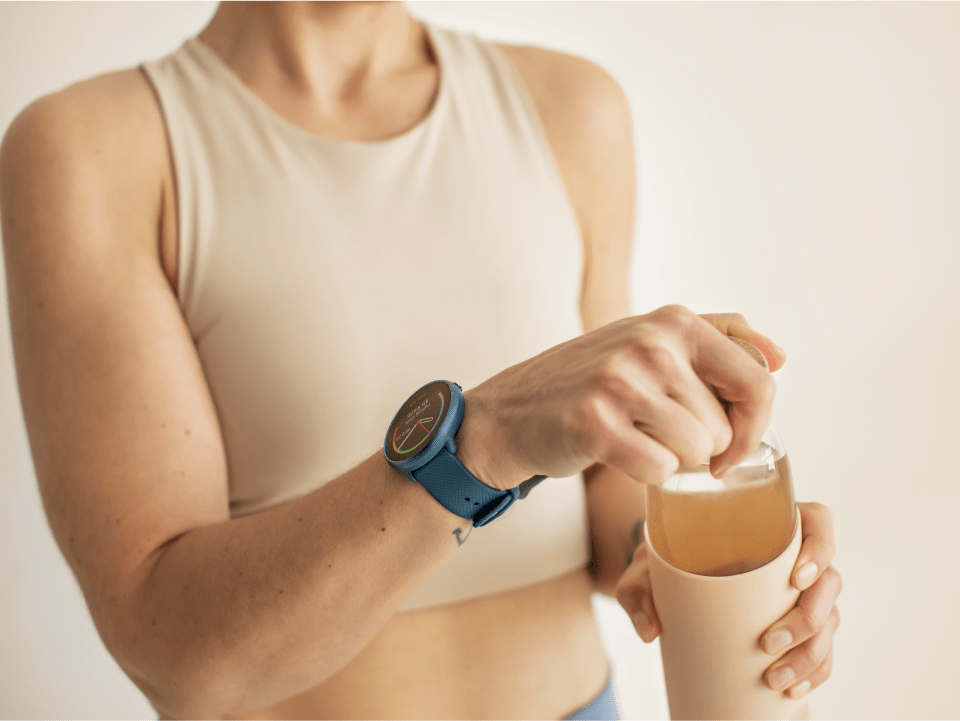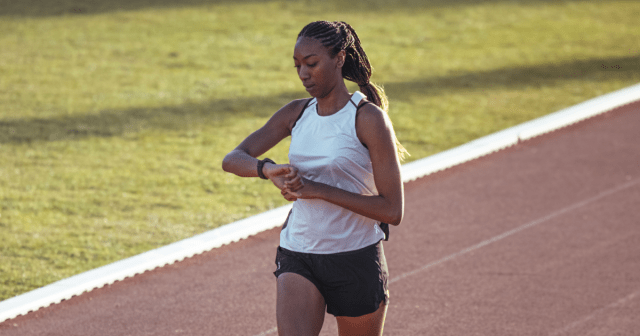Sugar. It doesn’t have a great reputation, but most of us can’t live without it. Experts have linked the rise in obesity, heart disease, and diabetes to our increased consumption of sugar, so it’s understandable if you think avoiding anything in your diet, sweet is the best way to go. Yet when it comes to training, a small amount of sugar before, during, and after your workout can, in fact, boost your performance.
So, how does sugar benefit physical activity? In this blog, we will look at how it can fuel your body and how you should think about the way you consume sugar before a workout. We will look at the ways it can be used during your workouts, such as hydration and boosting performance in endurance competitions. Finally, we will also look at how you can use sugar after your workout to aid your recovery.
What is sugar?
This might be a silly question, but its reply is not that simple. While you may commonly associate sugar with candy or the white stuff you stir into coffee, sugar comes in many forms: fructose (present in fruits), lactose (found in milk and dairy products), maltose (present in wheat, cornmeal, and other grains), and many other. In a nutshell, sugar is a carbohydrate, the main fuel source for your body and brain. More specifically, sugars are simple carbohydrates, a type of carbohydrate that is broken down quickly by the body to be used as energy.
Of course, carbohydrates come in many forms, too. Complex carbs, rich in fiber and found in whole grains, beans, and fiber-rich vegetable, pack in more nutrients than simple carbs and are one of the cornerstones of a healthy diet. However, when it comes to physical activity, complex carbohydrates take too long to break down for usable energy during exercise and can also upset your stomach if consumed right before or during a workout.
As you can see, this sugary topic is getting slightly complicated, but read on, we’ll soon see how you use sugar and different types of carb to improve your performance.

Energy and Glycogen: How your Body Stores Sugar for Energy
Both complex and simple carbohydrates are broken down by the body into glucose (blood sugar), so neurons, muscle fibers, and other cells can obtain the energy they need. Your body is smart enough to stock up this energy and use it when it most needs it, for example, during exercise. It goes this way: the liver takes any glucose that isn’t needed immediately and converts it to glycogen that can be stored in your muscles, ready for when you next need it. So, when you’re active your body will use this glycogen to keep your muscles pumping.
Some of the issues with sugar occur when we eat too much of it at a time when we aren’t doing any high-intensity physical activity. Consuming these energy-dense simple carbohydrates that have very little nutritional value means we store too much of something that we may never use.
The body can store around 300-400g of glycogen in muscle and about 70-100g in the liver. That’s not a very large storage capacity, so you can see why carbs play a key role in physical activity. Depending on the intensity, during running or cycling at “race day” pace, you may utilize in the range of 2-3g of carbohydrates per minute, and therefore, you’ll deplete your glycogen storage if such exercise lasts for a long time.
Simple carbs, like sugar, are absorbed quickly by the body making them a fast fuel source. This means that for high-intensity activities, like grueling training sessions and competitions, sugar can immediately provide you with an easy fuel boost when you need to keep going. It’s in those moments of high-intensity physical activity when sugar becomes an ally instead of a harmful substance: sugar can give you an immediate boost of energy. However, consuming sugar when your body doesn’t require that boost of energy can lead to problems.
Some of the issues with sugar occur when we eat too much of it at a time when we aren’t doing any high-intensity physical activity. Consuming these energy-dense simple carbohydrates that have very little nutritional value means we store too much of something that we may never use, leading to the health problems mentioned above plus other issues like tooth decay. So, it’s important to consume sugar wisely and at specific times.
How to consume sugar before a workout

Obviously, the amount of sugar and carbs you need to fuel intense exercise will vary from person to person. Most experts recommend that each day an athlete should consume 6-10 grams of carbs per kilo of body weight to effectively fuel their training and performance. However, it’s knowing which type of carbohydrates to eat and when will really help to enhance your workouts.
Unrefined, minimally processed carbs should always be the go-to energy source in your everyday diet. Nutrient-rich foods like brown rice, quinoa, sweet potatoes, oats, wholegrain pasta, and beans are great options. They contain protein and fiber, which will keep you feeling full as your body slowly metabolizes this energy, and are packed with vitamins, minerals, and antioxidants to help keep your body functioning effectively.
These starchy complex carbohydrates differ from the simple sugar carbs you find in candy and soda. These will give you that sugar rush by adding a quick hit of glucose to your blood but make you more likely to crash before you can receive a boost to your energy.
Instead, try dried fruit or bananas as a pre-workout snack. They contain glucose plus fructose, another type of simple sugar that you can also find in fruit juice and vegetables. Your body processes fructose differently from glucose, metabolizing it in the liver first before it reaches your bloodstream. Fruit is also high in fiber, which slows the sugar spike and gives you a more sustained energy boost, and is packed with vitamins, minerals, and antioxidants too.
Five golden rules of consuming sugar before a workout
- Eat unrefined, minimally processed carbohydrates like nutrient-rich brown rice, quinoa, sweet potatoes, oats, wholegrain pasta, and beans with every meal to ensure you are providing your body with a filling, slow-release energy source.
- Then fuel up with a healthy simple carb like dried fruit or bananas around 1-2 hours before you exercise to help maintain optimal levels of blood glucose for your muscles.
- Avoid simple sugars like candy or soda as these will add a quick hit of glucose to your blood but make you more likely to crash before you can receive a boost to your energy.
- Plan ahead so you have your pre-workout snack prepared to ensure you eat the right kind of carbs.
- Once you get within 30 minutes of your workout, stick with liquids so that your stomach isn’t trying to digest during exercise.
Sugar during workout: hydration and sports drinks
In everyday life, water is your ideal source of hydration. But when it comes to sustained high-intensity exercise, you need a different type of hydration to keep going.
Sports drinks are specifically designed for endurance workouts and competition events because they help to maintain hydration levels during prolonged periods of physical activity. They replenish the glucose, electrolytes, and fluids your body loses during high-intensity exercise and enhance your capacity to keep going.
Consuming the sugar in sports drinks during your workout helps to maintain your hydration because it helps to open up your intestinal wall so that the electrolytes (such as sodium, potassium, magnesium, and calcium) can be absorbed faster. These mineral ions are essential for muscle function, water retention, and neurotransmission, and without the sugar, they would take too long to work.
The often-large sugar content in sports drinks also provides a burst of energy for such endurance events. However, that means consuming sports drinks outside of your intense workout sessions isn’t recommended. As noted above, sugar has little in the way of nutritional benefits and so unless you are in a situation where you need rapid rehydration and energy, it’s likely these drinks could cause you to gain weight.
👉 Fun fact: Most sports drinks now use a combination of sugar sources. That’s because your body uses separate mechanisms to absorb these different types of sugar, so it can process them separately yet at the same time, adding to your intake. A 2008 study from the University of Birmingham, UK, found that combining simple carbs like glucose and fructose in these drinks could boost an athlete’s ability to absorb energy by up to 75%.

Sugar during endurance competitions
When competing in an endurance event, how much sugar should you consume to keep you going? And how often? It all depends on the intensity.
The rule of thumb for most athletes when doing an intense activity that is over one hour and lasts up to 2.5 hours is to consume 30-60 grams of carbohydrates per hour. For events over 2.5 hours, some experts recommend increasing this intake of energy up to 90 grams of carbohydrates per hour.
However, a 2015 study from the University of Bath, UK, suggested that if an athlete consumes only glucose, their capacity for absorption becomes “maxed out” after 60 grams per hour and could experience gastrointestinal discomfort. So, again it could be worth looking into consuming a dual source of carbohydrates as the previous study also suggested.
Energy gels
Energy gels are the most popular way of consuming sugar for fuel during endurance events. They contain glucose which is first absorbed into your bloodstream for any energy boost, then into your active muscles and organs. Most energy gels contain around 25g of carbohydrates per gel, plus electrolytes and caffeine. So, they are quite like a condensed sports drink but without the liquid (and thus the hydration) and should never be consumed at the same time, as you’ll consume too much sugar at once.
While you might be tempted to down two gels in one go when you’re feeling exhausted, your body is likely to crash trying to process this sudden, sizable intake of sugar. Instead, consume part of a gel before you need it, as it could take anywhere between 3-15 minutes for you to feel the effects. Then split your overall hourly intake of energy gels into 15-minute increments, diluting it with water to aid digestion. You can also alternate between caffeinated and non-caffeinated energy gels if you want to limit your intake of caffeine.
Practice your fueling strategy
It’s also ideal to train with energy gels first, before an endurance event. It means you’ll already understand what flavors you like and how to time your intake over time. Plus, you will give your stomach a chance to adapt to being used while you’re active.
It’s also ideal to train with energy gels first, before an endurance event. It means you’ll already understand what flavors you like and how to time your intake over time. Plus, you will give your stomach a chance to adapt to being used while you’re active.
Alternatively, if you are doing moderate-intensity activity for over an hour, you can look at combining simple carbohydrates with some small amounts of protein and fat to achieve the necessary sustained energy. However, it’s important to remember to avoid fiber as that can cause bloating and gastrointestinal upset, which you don’t want to be dealing with during a competition or event.
It’s also important to remember that while consuming a large amount of sugar while exercising won’t adversely affect your general health, it can still have an impact on your teeth. So, it’s important to always brush immediately after any workout or event where you consume any sports drink or gels. Some ultramarathon runners even plan out teeth-brushing stops at specific aid stations on extra-long runs to ensure they maintain their dental health.
Recovery: Sugar after workout
When it comes to post-workout nutrition, you may think protein is all you need. However, simple carbohydrates play a role as well. The process of building muscle tissue during recovery does indeed require protein but to do this, you’ll need some energy – and it’s the one thing you’re probably lacking by the end of your workout.
That’s why you may experience a sudden sugar craving after a workout. Even though you’ve stopped the intensity, your muscles still have work to do and need a quick sugar fix to replenish their glycogen stores. It will also help you continue to absorb electrolytes efficiently too. So, within 30 minutes of finishing your workout, eat or drink some simple sugar so that your body is ready to assist with the muscle recovery process.

Great post-workout snack options tend to combine both carbohydrates and protein so that you receive each of the necessary elements to kick-start your recovery. Protein bars that include sugar are the obvious choice these days, but some more classic options are a peanut butter and jelly sandwich or a glass of chocolate milk.
Throughout the rest of the day, make sure your diet is rich in complex carbohydrates and fiber, to ensure you have the right nutrition to both recover from this workout and then prepare for the next one. Don’t forget to get a great night’s sleep too – it’s also essential for muscle growth.
Conclusion: sugar and your workouts
As we have seen, consuming sugar before, during, and after a workout is very different from consuming sugar during the rest of your day. It can provide a necessary source of fuel for high-intensity activities, so when used minimally and intentionally, sugar can actually be good for you.
Summary of key points:
- Sugar is a simple carbohydrate that doesn’t have any nutritional benefits but is an effective source of fuel for your body and brain.
- There are different types of simple sugars, such as glucose, fructose, and lactose, which are each processed by your body in different ways.
- Sports drinks contain sugar to aid your hydration by supporting the fast absorption of electrolytes and boosting your energy levels.
- Consuming sugar during endurance competitions is also another way to enable you to have a consistent energy source.
- Eating sugar after a workout also aids the muscle-building process during recovery.
Remember, it’s important to work out what types of sugar work best for you and what amounts and timing of consumption boost your ability to stay active. So, enjoy the sweet process of making sugar a part of your workouts.
If you liked this post, don’t forget to share so that others can find it, too.
Or give it a thumbs up!
I like this article
Please note that the information provided in the Polar Blog articles cannot replace individual advice from health professionals. Please consult your physician before starting a new fitness program.




